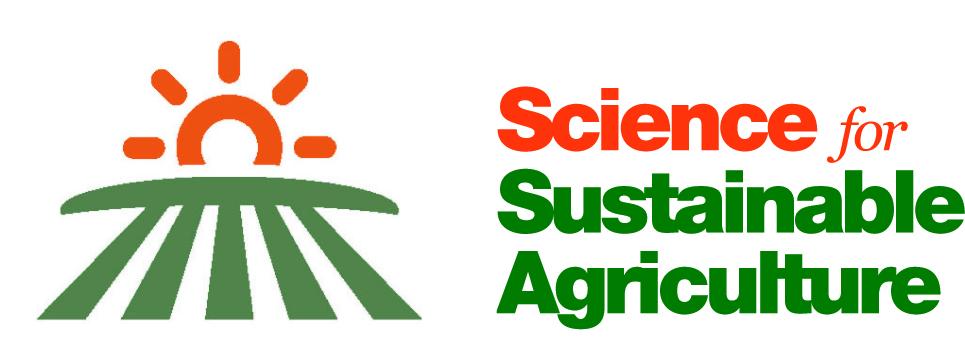Innovation can support the goals of regenerative agriculture – but are technologies like gene editing in or out?

Genetic technologies can help deliver the objectives of regenerative agriculture, says UK plant scientist Professor Johnathan Napier. But will they be allowed to, he asks.
A thought-provoking article from the US, entitled ‘The Food Conundrum: Can Regenerative Agriculture Feed The World?’ caught my eye recently. Thought-provoking because the answer given was – yes, with the right tools, regenerative agriculture can truly be scaled to feed everyone.
Reading the article prompted me consider the ‘regen ag’ concept, and its potential, in a rather different light. As the author, Jarvin Garbusch, points out, regenerative agriculture is most commonly associated with organic and agroecological approaches to farming, because that is the narrative most frequently on display.
But that need not be the case.
Garbusch explains that regenerative agriculture applies a systems-based approach to improving the resilience of food production, with reduced dependence on inputs, using practices such as cover cropping, crop rotation, rotational grazing and animal integration.
But unlike organic farming, it is not prescriptive about specific technologies or inputs. Where organic standards and certification schemes exclude certain tools, like synthetic pesticides and fertilisers, as well as new plant breeding methods, such as GM and gene editing, regenerative agriculture embraces technological advancements which can help restore the health of soils and ecosystems, while still producing at conventional levels of scale.
By harnessing the potential of new technologies, Garbusch suggests that regenerative agriculture could help build a bridge between more ecologically-focused approaches to improving soil health, water quality and biodiversity, and the real-world challenge of producing enough affordable food for a growing world population in the face of a changing climate and with increasing pressure on the Earth’s finite natural resources.
He runs through the digital and precision engineering technologies which are helping farmers to reduce their environmental footprint, such as smart irrigation, GPS-enabled tractors and soil moisture probes, and multispectral sensors to track which crops need more, or less, nitrogen, so optimising fertiliser use.
He also points to biotech applications, for example using the power of plant microbiomes to improve strains for soil health, pest control, nutrient absorption and disease resistance. And using biotech advances to develop crops that require less fertiliser, that are more resistant to pests and diseases, that can use less water, or even be irrigated with seawater.
According to Garbusch, regenerative agriculture and biotech together may ultimately be the only way to ensure the entire world's population can be fed.
Indeed, there are so many ways in which our improved understanding of plant genetics, and our ability to make more precise changes to crop plants, could support the principles and objectives of regenerative agriculture.
For example, using gene editing techniques to tackle previously intractable disease and insect pest control issues in N-fixing crops such as peas and beans, and to adapt new pulse crops like soya to our growing conditions, could be transformative for UK rotations in terms of fertiliser use, soil health and disease control, as well as reducing our reliance on imported protein sources.
In my own crop of interest, the oilseed Camelina, companies like Yield10 Bioscience in the US are already working on gene edited varieties as a ‘cash cover crop’, providing a second harvest in the form of biofuel and animal feed while still supplying the ecosystem services that align with the concept of regenerative agriculture.
As I wrote recently in Nature Sustainability, encouraging progress is also being made to develop genetically engineered strains of Camelina which can act as bio-factories to produce a more economically viable source of insect pheromones for use as an alternative form of pest control.
Until now, the prohibitive cost of using pheromones - a concept pioneered by scientists at Rothamsted Research - has prevented its widespread adoption. But this cheaper method of manufacturing artificial pheromones could help reduce farmers’ current dependence on insecticides, as well as their associated impacts on non-pest insects, watercourses and the build-up of chemical residues in the ecosystem.
Amazing biological science such as this holds the key to feeding nearly 8 billion people without toxifying the landscape and further depleting our natural capital and non-renewable resources.
So how is the ‘regen ag’ debate shaping up in the UK, and will biotech innovations such as this be ‘in’ or ‘out’?
A recent leader in Farmers Weekly suggested that a battleground is looming for control of ‘regenerative agriculture’, as the farmer-led grassroots movement goes mainstream. It warned farmers against ceding control to corporate interests looking to cash in, or to straitjacketing regen ag into a certification scheme, concluding that “it will be beneficial to all sides if farmers are left in the driving seat.”
The corporate interests Farmers Weekly was referring to were multinational food brands like Nestle, and global agri-supply companies like Yara.
But a far more serious challenge to prospects for regenerative agriculture may be emerging as different factions of the farming industry, with equally strong and vested commercial interests, also try to muscle in.
This policy paper from organic sector body Organic Farmers & Growers argues that organic farming ticks all the boxes for regenerative agriculture, and because regen ag doesn’t have a clear definition or certification process, the closest thing is organic.
And a recent report - ‘Feeding Britain from the Ground Up’ - from the Sustainable Food Trust uses the terms organic, agroecological and regenerative – apparently interchangeably.
The SFT report, and its claim that we can feed people, leave room for nature and tackle climate change by transitioning to agroecological farming, was recently described as ‘flawed and unrealistic’ in a critique by agricultural economist Graham Brookes.
Assumptions contained in the report include:
- a 20% increase in organic crop yields, with no supporting basis or evidence provided, simply sidestepping the reality that organic farming produces significantly less food from the same area as non-organic systems;
- a 50% decrease in the amount of food wasted beyond the farmgate;
- huge shifts in eating habits in the UK, as consumers move away from chicken and pork towards a largely meat-free diet of fruit, vegetables, cereals and pulses - achieved through consumer willingness to change on the back of publicly funded education campaigns.
And against the background of a cost-of-living crisis and record food price inflation, Brookes notes that while the SFT report acknowledges that its plan will further increase the real cost of food, this is simply addressed by assuming significant government (taxpayer) intervention to ensure those on lower incomes are helped with subsidised food.
With the serious challenges confronting the world’s food supply, in the face of climate change and population growth, we don’t need fairy tales like this.
The future for regenerative agriculture lies in applying scientific data and evidence, embracing not rejecting high-tech solutions, and combining innovation with established best practice and knowledge from a range of farming systems.
That is the only way to feed the world sustainably.

